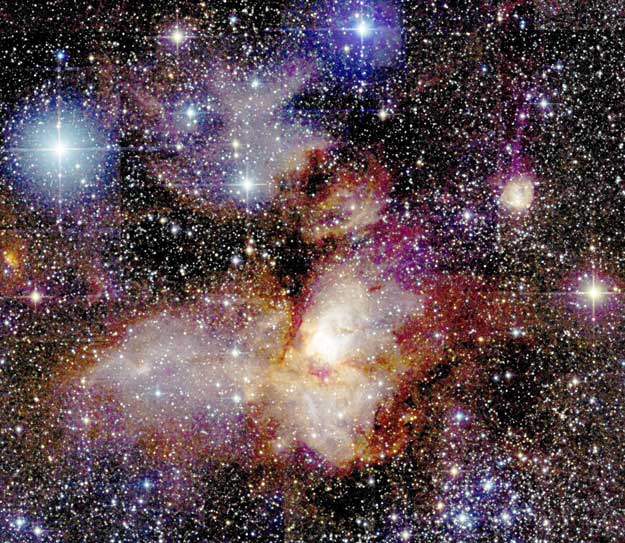Star-Forming Region RCW38 from 2MASS

Explanation:
The star cluster in RCW38 was hiding.
Looking at the
star forming region
RCW38 will not normally reveal
most of the stars in this cluster.
The reason is that the
open cluster
is so young that it is still shrouded in thick
dust that absorbs visible light.
This dust typically accompanies
the gas that condenses to form young stars.
When viewed in
infrared light, however, many stars in RCW38 are
revealed, because dust is less effective at
absorbing infrared light.
The
above representative-color image mosaic of RCW38 taken by the
2MASS sky survey in infrared light shows not only many
bright blue stars from the star cluster but clouds of
brightly emitting gas
and dramatic lanes of dark dust.
RCW38 spans about 10
light-years and is located about 5500
light years away towards the
constellation of
Vela.
Authors & editors:
Robert Nemiroff
(MTU) &
Jerry Bonnell
(USRA)
NASA Web Site Statements, Warnings,
and Disclaimers
NASA Official: Jay Norris.
Specific
rights apply.
A service of:
LHEA at
NASA /
GSFC
& Michigan Tech. U.

